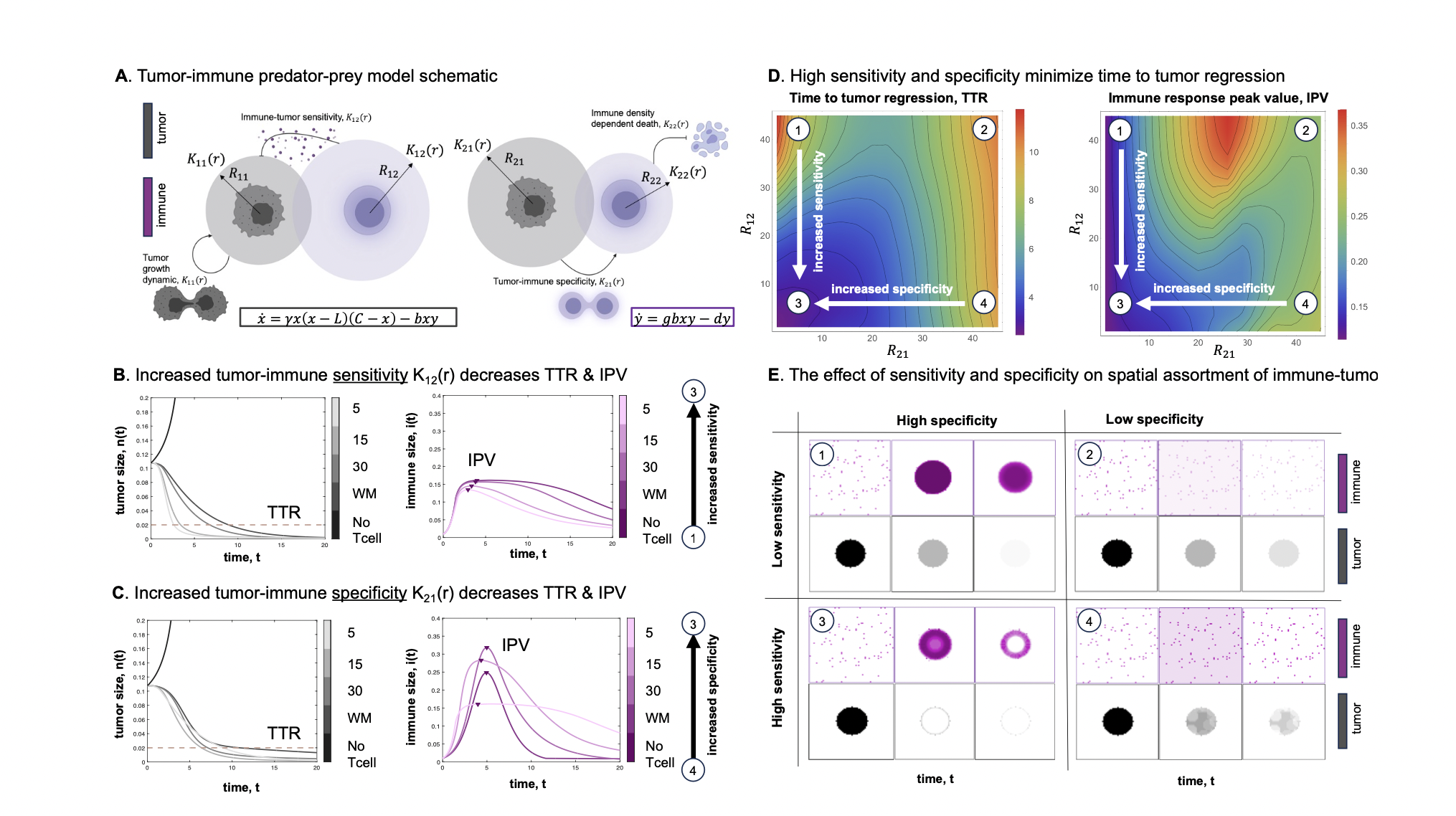Preprint: spatial interactions in immune escape


Paper Summary
Direct observation of immune cell trafficking patterns in clinical tumors is challenging, but computational simulations based on clinical data provide valuable insights. Collagen, a fundamental component of the extracellular matrix (ECM) within the tumor microenvironment, plays a crucial role in regulating T cell-mediated killing of cancer cells by influencing T cell migration. In vitro studies suggest that T cells preferentially migrate along collagen fibers, indicating that collagen orientation governs T cell movement. To explore this phenomenon, we evaluated collagen density and alignment using Second Harmonic Generation (SHG) imaging of Head and Neck Squamous Cell Carcinomas (HNSCC). SHG allowed quantification of collagen density (D(x)), and collagen alignment was calculated using the Orientation J plugin. We incorporated collagen alignment data into our artificial life framework to model the gradient field under the influence of artificial immune cells. We examined two hypothesized modes of immune cell trafficking based on collagen alignment: perpendicular or parallel movement with respect to collagen fibers. Using artificial immune cells distributed evenly on the domain edge, our model predicts that the parallel mode exhibits a stronger anti-correlation between immune coverage and disease stage, with all stage 4 patients showing lower immune coverage compared to stage 1 tumors. This integration of computational modeling with experimental data enhances our understanding of how microenvironmental factors shape immune responses in cancer progression.
Download
Download the paper here.





Comments